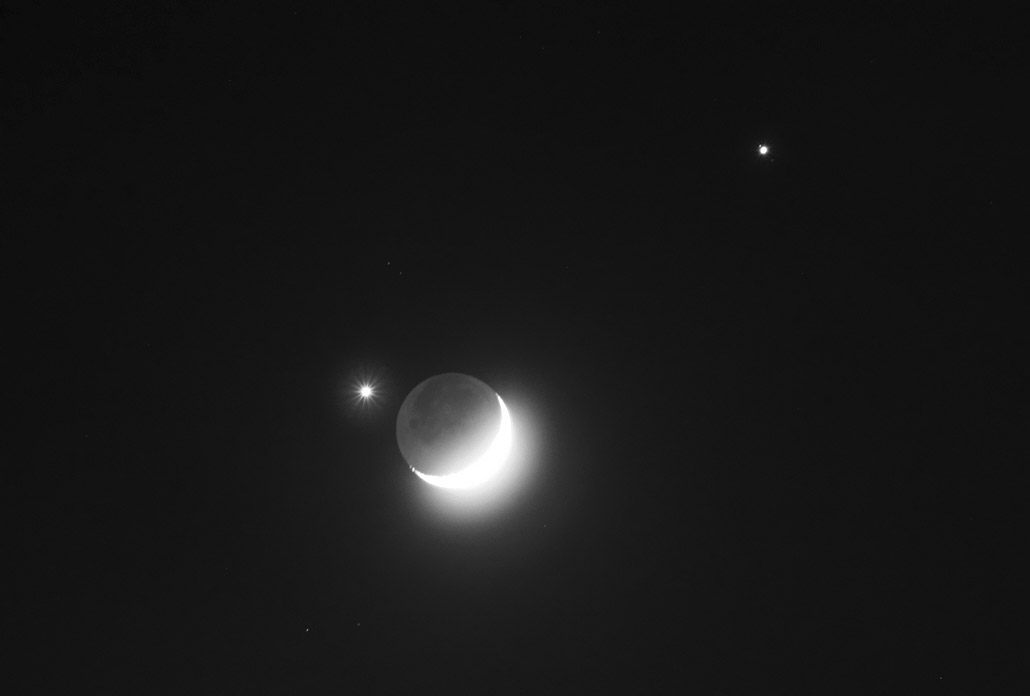Difference between revisions of "April 20, 2009"
(Created page with "__NOTOC__ =Why not Venus?= <!-- ws:start:WikiTextHeadingRule:2:<h1> --> <!-- ws:start:WikiTextLocalImageRule:8:<img src="/file/view/LPOD-Apr20-09.jpg/68499633...") |
(No difference)
|
Revision as of 15:13, 1 January 2015
Why not Venus?

image by Panagiotis Nikolakakos, Sparta, Greece
One of the greatest glories of Earth is its moon. From Earth outward in the solar system all planets (and even the wanna be planet Pluto) have moons. Jupiter, at top right in this lovely image, has dozens of Moons (two are visible), and Earth, whose reflected light falls on the darker portion of our Moon, has only one. Why doesn't Venus (dazzling next to the Moon) have any? No one knows for sure, which is a perfect opportunity for speculative theories. A common theory is tied to the fact that Venus rotates very slowly, backwards - at least compared to the rotation directions of other planets. Another input is the current belief that Earth's Moon formed as a result of a giant impact that ejected material from the projectile and Earth into orbit around the Earth where it accreted to form the Moon. Three years ago two CalTech scientists combined this information to suggest that Venus suffered two giant impacts, during which it gained and lost a moon. The Chuck Wood
Technical Details
Dec. 1, 2008, 18:50. Canon 450 d, iso 400, f/18, 30sec.
Related Links
An animation of the December 1, 2008 triple conjunction.
COMMENTS?
Click on this icon File:PostIcon.jpg at the upper right to post a comment.



